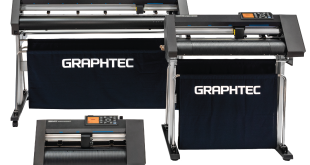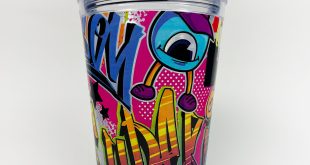 Dean Sanger, managing director of Sabur Ink Systems explores the history of T shirt printing.
Dean Sanger, managing director of Sabur Ink Systems explores the history of T shirt printing.
Now considered a wardrobe staple, the classic plain white T shirt first appeared some time around 1913, when the US Navy began issuing them to sailors as an undergarment. Made of light weight cotton and easy to launder, no one could have ever predicted the journey the humble plain white T shirt was about to make.
In the 1930s, several gift store companies in Miami, located not far from the naval base, realised the plain white undergarment was perfect apparel for the Florida heat and sunshine. Therefore so the plain T shirt didn’t look like underwear and cause the wearer any embarrassment, the gift store companies began printing the names of tourist destinations and attractions on to the front and hey presto, the printed T shirt was born. Then in 1939 the printed T shirt made the journey from Florida to Hollywood by appearing in classic movie The Wizard of Oz, as three Emerald City citizens can be clearly seen wearing printed T shirts with the word OZ emblazoned across the front.
T shirt printing goes main stream
In the early 1950s, several companies in Florida began mass producing printed T shirts. As a result famous brands and tourist attractions cottoned on (no pun intended) to the popularity of printed T shirts and began producing their own specific collections. From this point on the sale of easy to wash and wear printed T shirts snowballed.
From the 1960s, printed T shirts were being worn by every demographic. From promoting the wearers most recent holiday destination, to advertising the brand they liked, to even the pop band they followed. The printed T shirt became an extension of the wearer’s personality. Considered classic designs, round neck T shirts featuring the likes of Mickey Mouse, Coca-Cola and even the face of Marxist revolutionary Che Guevara, flew off the shelves.
Through out the later stages of the 20th century, the popularity of the printed T-shirts continued to rise. The 1970s saw T shirts printed with brightly covered album covers, while in the 1980s plain white T shirts with clear black font told the public to either Relax, Choose Life or Wake me up before you Go-Go.
Printed T shirts today
Printed T shirts are just as popular today, plus with advances in digital technology, designs and images can be easily created by anyone wishing to create their own messaging or design, and transferred to a DTG printer in order to produce a specific T shirt.
When it comes to wearing printed T shirts today, they’re not only worn by the public, but they’re also being utilised by both businesses and charities to create and amplify brand awareness. Now seen at every trade show, conference, fund raiser or seminar. Branded corporate T shirts are regularly produced to complement a number of activities and are favoured by marketing managers due to the corporate identity they create. Plus they are very cost effective to produce for the whole team and unlike a lot of other specific activity collateral can be used long after the event. In fact due to the rise in brand awareness activities, T shirts are the most popular textile item to print on.
How DTG printing has helped T shirt printing evolve
Prior to developments in digital technology, printed T shirts were mainly produced by traditional screen printing methods which required a screen for every colour featured in the design. This was not only very time consuming for the printer to setup but also in respect of printing the actual T shirts.These days however, its very cost effective for printing companies to utilise a DTG printer. With the ability to produce designs which would have previously been impossible to create. Direct to garment printing enables the printing of high quality images onto a T shirt. Plus as the ink is cured into the fabric, images are soft to the touch and do not fade or loose vibrancy. Also there’s no need for excessive preparation, as a DTG printer uses popular digital formats such as Tiff, PDF, EPS and PSD files to replicate the creative.
 It’s worth noting compared to the traditional screen print process, digital textile printing has a considerably shorter turnaround time. An added bonus if a customer requires their print order as soon as possible. There’s also an environmental benefit, as digital textile printing saves a huge amount of water compared to conventional screen printing.
It’s worth noting compared to the traditional screen print process, digital textile printing has a considerably shorter turnaround time. An added bonus if a customer requires their print order as soon as possible. There’s also an environmental benefit, as digital textile printing saves a huge amount of water compared to conventional screen printing.
So there you have it, from the Wizard of Oz to Wham’s Wake me up before you go-go, it’s no wonder printed T shirts are coming up to their 90th birthday. Plus with the continuous developments in digital technology, and the way direct to garment printing has streamlined the production method, printed T shirts are sure to remain a firm favourite with anyone wanting to promote a brand, band or anything else they feel passionate about.
 Printwear & Promotion The Total Promotional Package
Printwear & Promotion The Total Promotional Package




